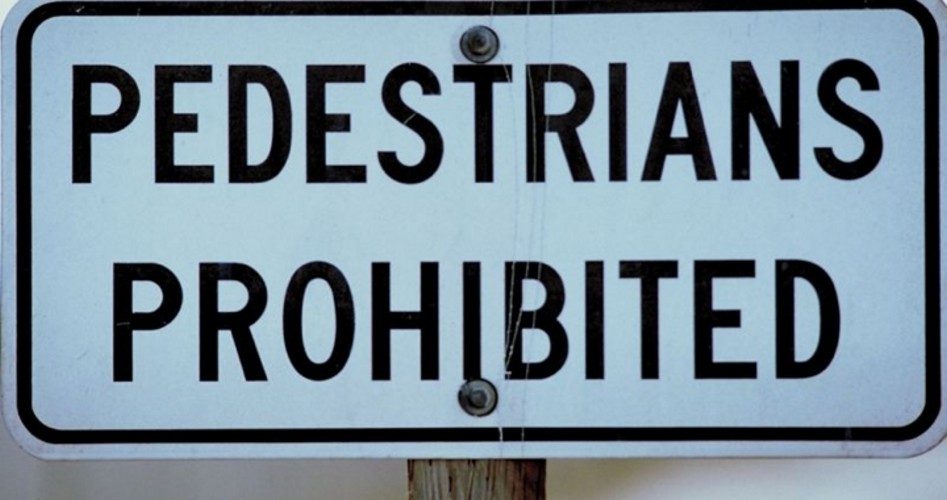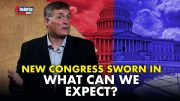
The federal government’s cost is measured not only in taxes paid by citizens, or in borrowing when tax revenues aren’t sufficient, but also must be measured in terms of regulations imposed by government agencies to accomplish what Congress can’t or won’t. That’s the core of the argument presented by Clyde Wayne Crews of the Competitive Enterprise Institute (CEI) in his introduction of this year’s “Ten Thousand Commandments 2013.”
For the first time in the 20 years that the institute has been attempting to measure the cost of government agencies’ regulations, that cost now exceeds half of the annual budget, at $1.8 trillion. When added to the budget itself, which is rapidly approaching $4 trillion a year, government is absorbing more than a third of the nation’s economic output either directly or indirectly.
For instance, families “pay” nearly $15,000 a year in hidden regulatory taxes. For small businesses, regulations cost almost $11,000 per employee. And the trend is ever upward. In the past 20 years, more than 81,000 rules have been issued, more than 3,500 a year, or more than nine every day. That works out to about 30 new rules issued by agencies for every law passed by Congress. And there are another 4,000 proposed rules in the pipeline the cost of which CEI can’t yet measure.
The tsunami of rules include regulating the importing of “unmanufactured wood products” by the Department of Agriculture, the determination of what constitutes “a single serving” by the Health and Human Services Department, “energy conservation” standards for wine chillers, battery chargers, and mobile home furnaces by the Department of Energy, and regulations concerning automobile head restraints and seat belts by the Department of Transportation.
The big Mack-daddy of all regulating agencies is the Environmental Protection Agency, whose rules, according to Crews, “are especially subject to being used to enact policies that would likely not pass muster with voters.” EPA rules in 2012 were up 44 percent over the previous year, and cost American taxpayers an estimated $353 billion every year – the most of any agency.
Once Crews has waded through 55 pages of graphs, charts, and expense summaries, he comes to the heart of the matter: what to do about it? He has only two suggestions: One is to create another agency specifically tasked with taking “objective” measures of the costs of regulations pouring out of Washington in an effort to provide “transparency.” The second? Establish, somehow, “congressional accountability” that would help “affirm a principle of ‘no regulation without representation.’”
While his study is impressive and his scholarship unquestioned, Crews and others interested in reining in big government could not do better than considering what the Constitution says about the matter. In Article One, Section One, the Founders provided that
All legislative powers herein granted shall be vested in a Congress of the United States, which shall consist of a Senate and a House of Representatives.
One searches that precious document in vain to find any power granted to Congress to shift or transfer such authority to a separate agency, especially an agency of unelected bureaucrats who write, interpret, and enforce the laws by themselves, exactly the deadly combination of tyranny the Founders were trying to avoid.
In his riveting exposure of how the Department of Justice has expanded its own power to write, interpret, and enforce its directives, Harvey Silverglate, a lawyer specializing in criminal defense and civil liberties, in his book Three Felonies a Day, concludes that in the course of a single day, a law-abiding citizen could be found to have violated numerous rules and regulations without even knowing it, and be charged with felonies as a result:
The volume of federal crimes in recent decades has increased well beyond the statute books and into the morass of the Code of Federal Regulations, handing federal prosecutors an additional trove of vague and exceedingly complex and technical prohibitions to stick on their hapless targets.
And there is the real cost of the regulatory state increasingly being imposed on citizens: the “moral hazard” of regulation, as Ron Paul puts it:
The … problem is the trust that people blindly put in regulations, and the moral hazard this creates. Too many people trust government regulators so completely that they abdicate their own common sense to these government bureaucrats. They trust that if something violates no law, it must be safe…
With central planning, everything shifts from one’s own judgment about safety, wisdom and relative benefits of a behavior, to the discretion of government bureaucrats.
Simply put, the regulatory state removes, piece and piece, rule by rule, mandate by mandate, personal responsibility from citizens and replaces it with a comfortable sense of safety and well-being that allows them to be manipulated according to the wishes of unelected bureaucrats — sheep to be fed, corralled, and shorn.
That’s the real cost of the regulatory state that Crews misses entirely. It’s not mainly about cost. It’s about freedom.
A graduate of Cornell University and a former investment advisor, Bob is a regular contributor to The New American magazine and blogs frequently at www.LightFromTheRight.com, primarily on economics and politics. He can be reached at [email protected].



